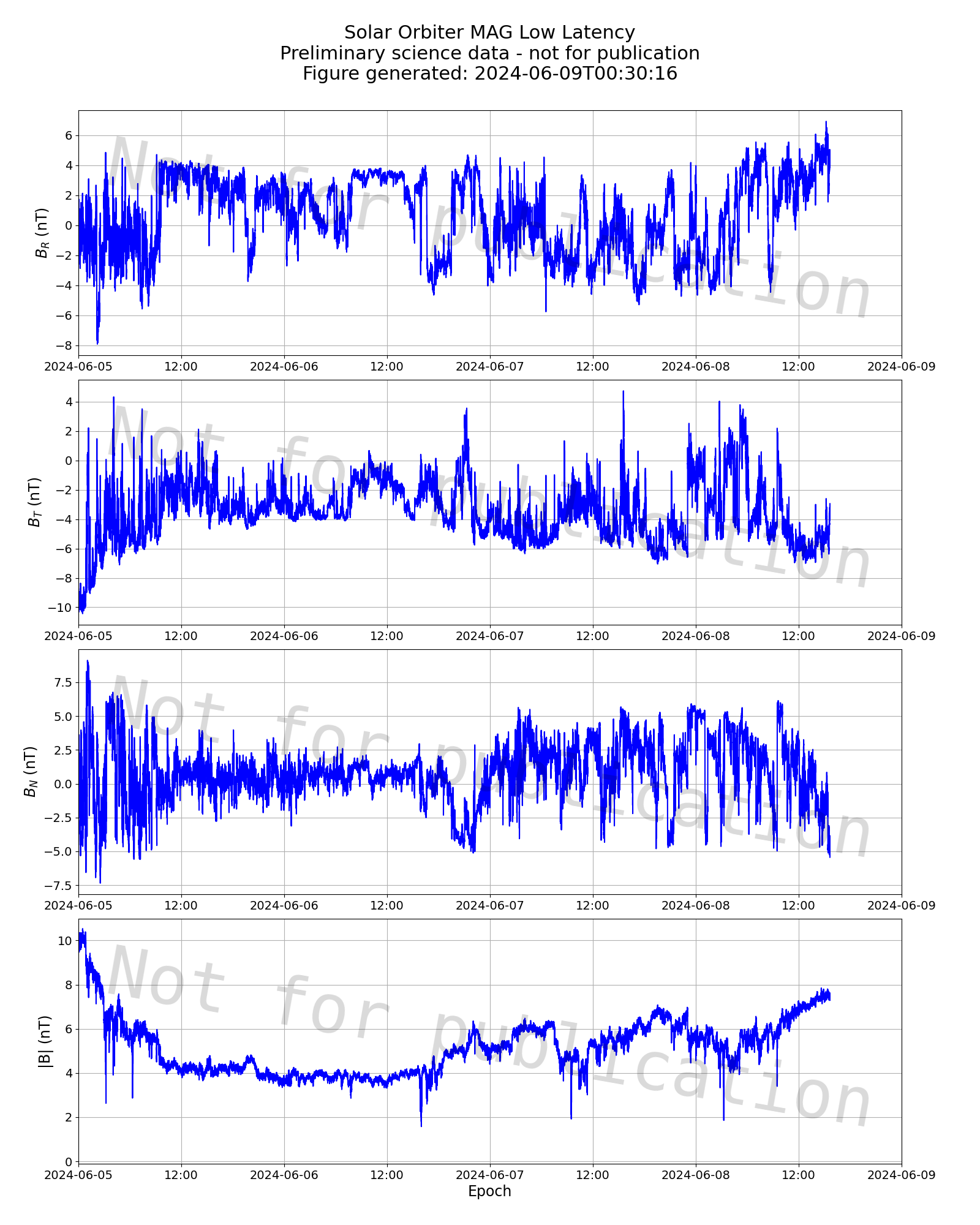This is preliminary data from the Solar Orbiter magnetometer, provided to allow real-time space weather monitoring. They are not for publication. For more information and to contact us, please see the bottom of this page.
Please note: Solar Orbiter is currently approximately aligned with the Sun-Earth line, so measurements here might help in predicting auroras. Please check data at the bottom of this page for the current angle to the Sun-Earth line, as well as the time of the next telemetry pass.

Current information about Solar Orbiter’s position and telemetry passes is given below:
What is this plot? This is a plot of the latest magnetic field measurements from Solar Orbiter. We plot the field as three components (the top three panels) and its magnitude (the bottom panel). The measurements come down from the spacecraft in real time when it is being tracked from the ground, which typically happens for around eight hours each day.
Where are these measurements taken? Solar Orbiter’s orbit is complicated and takes it closer to the Sun than Mercury, but also nearly as far out as the Earth. You can find out where it is today using this tool, and you can view an animation of its full orbit here.
How do I tell when an aurora might happen? If Solar Orbiter is within about 15 degrees of the Sun-Earth line, then what it measures can be similar to what arrives at the Earth. Geomagnetic activity, including auroras, are generally triggered by strong Southward-pointing magnetic fields. In these plots, this corresponds to large negative values in the third panel, labelled as “BN”. They need to last for several hours to generate a strong aurora. Even if Solar Orbiter sees such fields, because it is not perfectly upstream of Earth, there is no guarantee that an aurora will happen. You can read more about our real time space weather forecasting here.
About the data: This is Low Latency data and is not fully calibrated so artefacts can remain and it is not suitable for science use. The data is transmitted in real-time during spacecraft passes and updated here once per hour.
Accessing science quality data: Following calibration, all our data is publicly accessible at the European Space Agency Solar Orbiter archive.
Want to know more? You can learn about our magnetometer instrument and the Solar Orbiter mission. You can also access space weather forecasts from AuroraWatch, the UK Met Office and the US NOAA.
Contact us: If you have questions you can email solarorbitermaghelp@imperial.ac.uk.
Useful Links
Solar Orbiter Links: